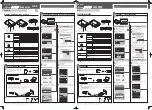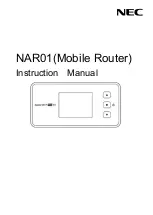
52
Wireless configuration
This strategy can be expanded to cover an even larger area using three channels, as shown in
the following figure:
802.11n best practices
This section provides recommendations on how to best use 802.11n wireless technology,
especially when legacy (a/b/g) clients must also be supported.
Supporting legacy wireless clients
The 802.11n standard is very similar to the 802.11g standard, in that both provide mechanisms
to support older wireless standards. In the case of 802.11g, protection mechanisms were
created to allow 802.11b and 802.11g wireless devices to co-exist on the same frequencies
despite using different signal modulation schemes. Since older 802.11b-only clients cannot
detect the newer 802.11g modulation scheme, 802.11g clients must “protect” their transmissions
by first sending a signal that alerts 802.11b clients to not attempt to transmit for a specified
period of time.
If protection is not used, 802.11b clients may transmit while an 802.11g frame is already being
sent. This leads to a collision and both devices need to re-transmit. If there are enough devices
in the network, the collision rate will grow exponentially and prevent any useful throughput from
the wireless network.
AP 2
AP 3
AP 4
AP 1
Channel = 1
AP 5
Channel = 11
Channel = 6
AP 6
Channel = 1
Channel = 11
AP 7
Channel = 6
Channel = 1
AP 9
Channel 11
AP
AP
AP
AP
AP
AP
AP
AP
Summary of Contents for M210
Page 6: ...6 ...
Page 30: ...30 Managing the M210 ...
Page 32: ...32 Managing the M210 ...
Page 46: ...46 Working with wireless communities and authentication ...
Page 74: ...74 Creating WDS links ...
Page 106: ...106 Tools ...
Page 110: ...110 ...
















































